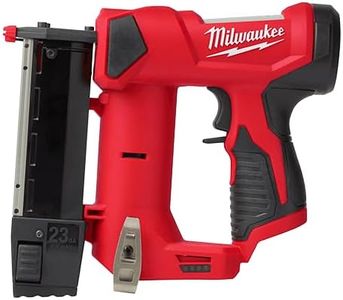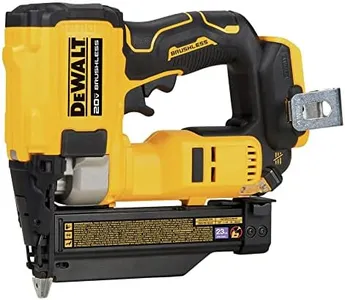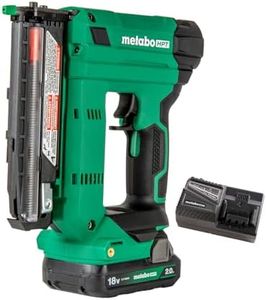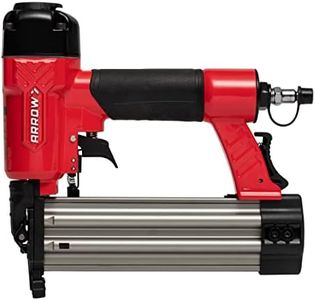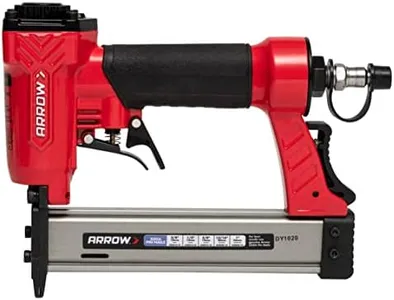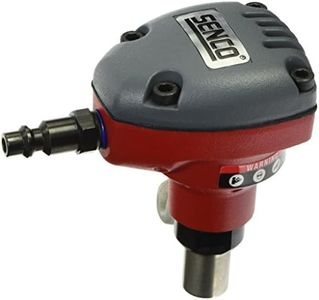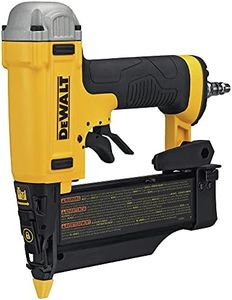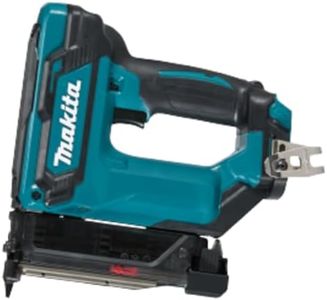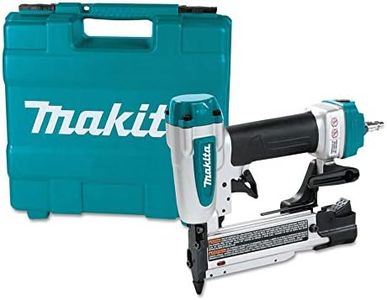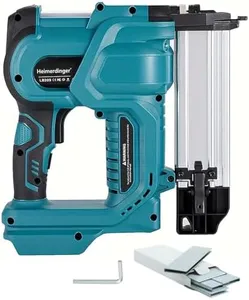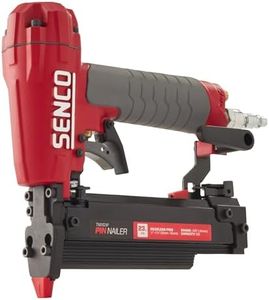We Use CookiesWe use cookies to enhance the security, performance,
functionality and for analytical and promotional activities. By continuing to browse this site you
are agreeing to our privacy policy
10 Best Pin Nailers
From leading brands and best sellers available on the web.By clicking on a link to a third party's website, log data is shared with that third party.
Buying Guide for the Best Pin Nailers
Choosing the right pin-nailer can make your woodworking or crafting projects more enjoyable and efficient. A pin-nailer is a specialized tool used to drive very thin, nearly invisible nails (called pins) into delicate trim, moldings, or other small pieces of wood without splitting them. Your selection should depend on the specifics of your tasks, as well as your comfort and experience with these tools. By understanding the main specifications of pin-nailers, you’ll be able to choose a tool that matches both your project needs and your working style.Pin Size CompatibilityPin size compatibility refers to the range of nail (pin) lengths the tool can handle. This is important because different projects require different pin lengths. Pin-nailers can accept pins from about 1/2 inch up to 2 inches. Shorter pins (1/2 to 1 inch) are more suitable for lightweight, delicate trim, while longer pins are necessary for securing thicker or denser materials. If you work mostly on small, fragile items, prioritize a pin-nailer that excels at handling shorter pins. For more versatile use, a wider size compatibility is more beneficial.
Gauge of PinsThe gauge indicates the thickness of pins the nailer fires. Most pin-nailers use either 23-gauge pins, which are extremely thin and almost invisible in finished work. This is especially important for preventing wood splitting and for achieving a clean appearance. Consider 23-gauge for trim and detailed constructions, and only look for other gauges if you have unique material requirements.
Power SourcePin-nailers are powered either pneumatically (using an air compressor) or via battery (cordless models). Pneumatic nailers are lighter since they have no battery but require you to have an air compressor and hose, which can be cumbersome but are reliable for continuous projects. Cordless nailers offer greater portability and ease of use since there’s no hose or compressor, though they may be heavier and need battery charging. Choose a pneumatic model for workshop use, or go cordless if you often work in different locations or value convenience.
Magazine CapacityMagazine capacity describes how many pins the gun can hold before needing a reload. Higher capacity means less frequent reloading, speeding up larger tasks. For long projects with lots of repetitive nailing, a high-capacity magazine is ideal. For occasional or detailed work where speed isn’t critical, a moderate capacity is sufficient.
Tip Design / No-Mar NoseThe tip design, especially a no-mar nose, is important for protecting your workpieces from dents or scuffs when placing the pin. A fine, narrow tip offers precise placement and minimizes blemishes. If you work on finished surfaces or delicate trim, prioritize models with a well-designed, protective tip.
Depth AdjustmentDepth adjustment allows you to set how deeply the pin is driven into the material. This is useful because different wood densities or materials may require the pins to sit at different depths for the best hold and appearance. If you work with a variety of woods, make sure your pin-nailer offers easy, tool-free depth adjustment for the greatest control.
